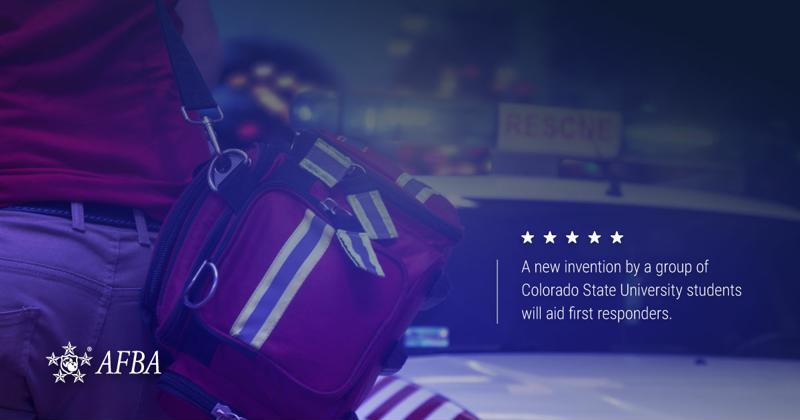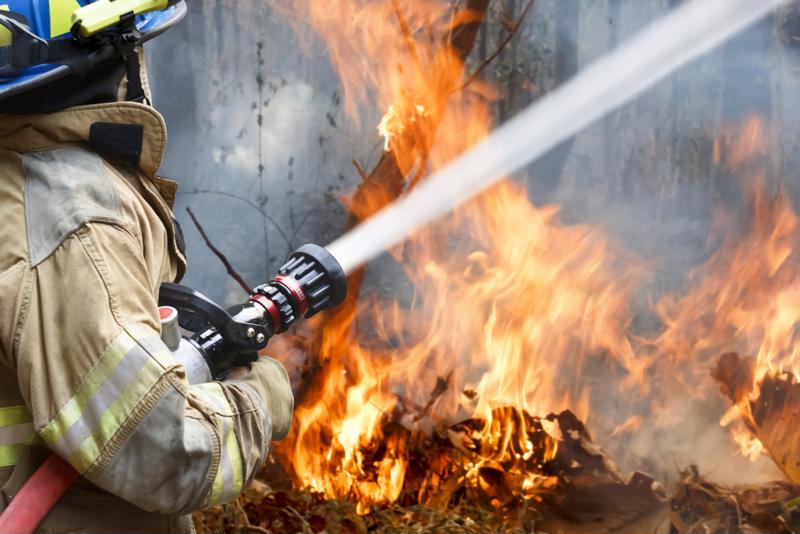Seven college students studying at Colorado State University-Pueblo have found a way to integrate NASA technology into a brand new product that takes the concept of a "security blanket" to a whole new level.
Though the prototype looks like nothing more than a simple green blanket with a silver circle design in the center, the invention may one day become an essential public safety tool, and has already succeeded in earning the CSU-Pueblo engineering undergrads a trip to the Johnson Space Center in Houston and a prestigious award.
The design integrates the NASA concept of a "portable wireless signal booster" into a lightweight, practical, waterproof nylon blanket that could easily be stuffed in a backpack or attached to camping gear. The students sewed a stamped copper Fresnel lens between two sheets of water-resistant fabric, creating a multipurpose product that can be used as a passive antenna able to boost incoming electromagnetic signals, or radio waves, up to 10 decibels in areas of low coverage.

"This will boost the signal on your cell phone," Kenneth "Kordell" Roberts, a three-year industrial engineering student at Colorado State University-Pueblo, explained to The Pueblo Chieftain. "If you are backpacking or hiking out in the wilderness, normally there would be no signal. But this will help."
Roberts and fellow students Alex Goodwin, Daniel Hoyle-Aguon, Connor Foust, Julian Fierro, Shermann Mcdermott and Wyatt Farris created the signal-boosting blanket as a way to assist first responders fighting wildfires and search and rescue teams attempting to locate lost hikers.
"We targeted more of search and rescue, wildfire firefighters and those types of markets where you would have a great need for something that was very lightweight and that was able to help increase your signal," Roberts explained. "They are not going to want to carry an active signal boosting system, because those weigh 20, 30, 40 pounds. We thought it would be good to create a product that would be very lightweight that can also provide these benefits."
Potentially life-saving invention earns students NASA internships, awards
In recognition of their genius innovation, the CSU-Pueblo students received an invitation to the NASA MITTIC Technology Transfer competition at the Johnson Space Center in Houston this past March.
The contest's entrants were tasked with designing a commercially viable product by implementing one of about 20 different NASA intellectual properties, which included the signal booster. The students then had a month to develop a 12-page concept paper which included planning and the development of a prototype. After submitting their paper to NASA, the students were named to the list of top 10 finalists and invited to spend four days touring the NASA facilities in Houston, listening to guest speakers and networking with other students and professionals in their field.
"We also continued to work on our prototype and the 10-minute presentation we did there. It was almost like a 'Shark Tank' pitch of the product we made," said Connor Foust, a second-year mechatronics engineering student at CSU-Pueblo.
Of the seven students that worked on the project, only four were able to make the trip to Houston, per NASA contest rules. Of those four, three were awarded prestigious NASA internships, according to La Voz Bilingüe, Colorado's longest-running bilingual newspaper.
"Two of them will be going to Ames Research Center in California's Silicon Valley," Dr. Jude DePalma, the students' engineering professor, told the newspaper. "It's life-changing for those students."
Additionally, student group leader Kenneth Roberts was recognized by NASA with the competition's Outstanding Leader Award.
The invention has clearly already made a difference in the lives of these students, but could one day help save the lives of countless others, as firefighters and other first responders use the technology to rescue those in danger.


